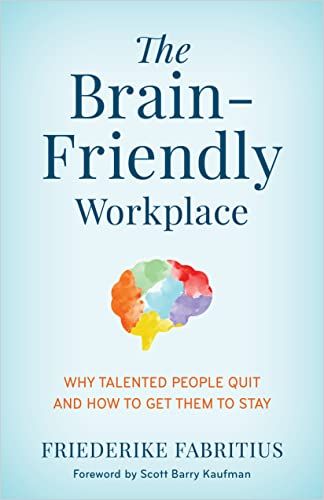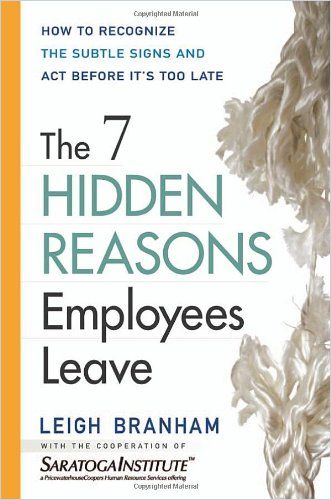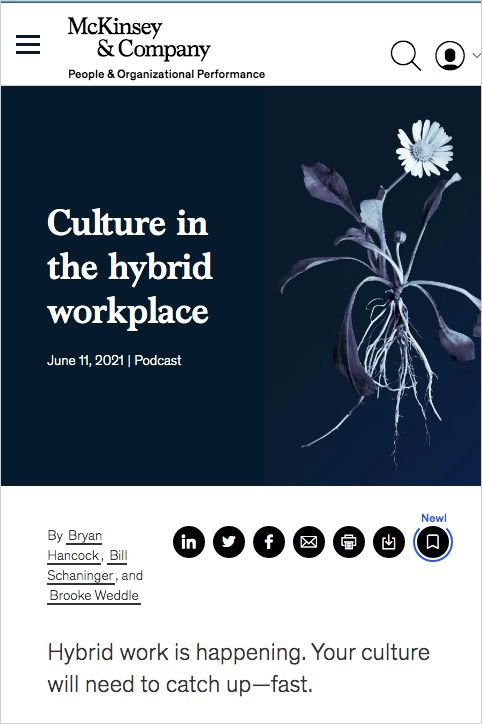“Hi Again!”

First, HR departments struggled with endless departures of talented employees in the aftermath of the pandemic, then they found no replacements in dried-up job markets – and now they face the question of whether (and how) to rehire colleagues who once left. As UKG puts it in their 2022 “Resign, Resigned, or Re-sign?” report: “For many pandemic-era job leavers, their leap did not result in a better experience. More than 2 out of 5 employees worldwide feel they were better off at their old job, finding many of the same issues at their new company with none of the familiar faces and routines.”
In fact, 1 in 5 have already boomeranged back to their prior company, with millions more open to the possibility of return.
UKG
Job boomeranging has several pros and cons for both the employer and the possible employee. To understand and consider them all, take an organized approach: First, understand what’s happening right now. Second, find out why people leave a company in the first place and why they want to come back. Finally, identify what HR can do to find the best solution.
1. Why Did People Leave?
Since the phenomenon primarily involves knowledge workers, it is reasonable to suspect that people leave (and come back) mainly because many companies invest too little in work environments that prove to be productive and valuable – even apart from the wages – i.e., “brain-friendly.”

The term comes from neuroscientist Friederike Fabritius who explains that these jobs might continue to be scarce but that it is not at all difficult to make an average job significantly more brain-friendly. This includes all commitment-generating workplace conditions, such as fun, surprises, curiosity, trust, discovery and shared success. Fabritius encourages organizations to engage people in their work by shaking things up. For example, rather than death by PowerPoint, use demonstrations. Introduce surprise as much as you can. Make meetings short to help keep boredom at bay. Encourage optimism and laughter. If you succeed, you will not only retain your workforce, but it will also become more productive:
Companies where employees report strong bonds and high levels of trust between colleagues generated on average $10,000 more revenue per employee per year.
Friederike Fabritius
Fabritius makes a compelling case that workplaces should cater to the needs of employee “neurosignatures” to boost performance and retention. To better understand her topic, she solicited feedback from successful leaders on high-value working conditions and combined it with her research. Her interviews with thought leaders like Thrive Global’s Arianna Huffington and molecular biologist John Medina provide inspiration and insight.
You, too, should always ask why people leave your company – and why they want to return. And analyze the gaps in between.
In the UKG study, astonishing differences emerged when leaders and former employees were asked about the suspected and actual reasons for quitting. So, why do people leave, according to their managers? And how do the employees who left respond to the very same question?
- #1: Pay/compensation – 68% (#1 for employees at 61%)
- #2: Lack of career development opportunities – 65% (#4 for employees at 59%)
- #3 Frustration with executive leadership – 63% (#5 for employees at 57%)
- #4 Poor work-life balance/burnout – 63% (#3 for employees at 59%)
- #5 Do not feel valued or belonging – 62% (#2 for employees at 60%)
What you can learn from these numbers:
- Money matters (and will do so when rehired because, most often, rehires work in a higher and/or better-paid position than before they left). Here’s how to improve your compensation system and leverage multigenerational teams.
- If you can make your employees feel that they are doing a good job and are in the right place, you save the hassle of letting go and rehiring in the first place. Learn how recognizing the tiny details generates stellar results and how to build a culture of courage and candor. In Unquittable, management consultant Jim Bitterle offers additional practical tips to help you overcome outdated biases and structures. In his hands-on guide, you’ll learn how to develop and retain high-quality talent by building on a positive work culture.

- Those who can show their people clear and healthy paths to new opportunities and assignments reduce the top two pain points about work-life balance and career opportunities at once. Learn how to analyze and address skills gaps, how to stop pressure from turning into stress and how to set up a mentoring program.
- Leaders who lack confidence and skills create more turnover in staff. Here are some interviews and how-to-guides to nudge you towards more authenticity and success in leadership:
2. Why Do People (Consider a) Return?
According to UGK, the motivation of a former employee to return to an organization are pretty straightforward: 38% of your former employees miss their peers and coworkers after some time, 31% found their new role less comfortable, 22% prefer serving their former customers again, 19% made less money in their new position, and 16% think that their work-life balance decreased. Again:
It’s about company culture, job purpose, salary, and health.
So whether a company contacts a former employee, the latter applies for an advertised job, or knocks again to ask if their talent is needed, there must be an agreement that the above factors have improved or at least have not worsened. HR departments urgently looking for staff with specific skills that they know have been with the company before have a triple advantage when rehiring in this way: They close a gap, save money at hiring and onboarding new personnel and make a formerly valued and now even more motivated person happier than they were. To succeed, however, they must also keep at it to ensure that the framework conditions do not deteriorate again or that possible job downsides go unaddressed or ignored. This process is called “Reculturing.”

Consultant Melissa Daimler explains it as an ongoing act of redesigning your corporate culture to link people’s behavior with your company’s processes, practices, organizational system and purpose. Businesses err when they try to change their culture merely by launching training initiatives or listing values but not acting on them. Instead, she advises viewing your culture as an overall system.
In the following summaries at getAbstract you will find further information:
3. Boomerang Hiring As a Tactic
According to workplacetrends.com, 76% of HR professionals say they are more accepting of hiring boomerang employees today than in the past. Many of them now focus specifically on persuading excellent former employees to return. This tactic is boomerang hiring, and it has the following advantages:
- Former employees have likely gained new knowledge in other places and gotten ideas about how to approach problems in a similar job profile, which processes need improvement, and what skills need to be built.
- When people return to a company voluntarily, they usually come with a fair amount of motivation – at least if their experience in another place is responsible for their return.
- Employees willing to return often have a positive attitude towards the former company and its staff.
- They already know and value the culture of the former (and now rehiring company) and their work area (in most cases).
- This means their onboarding costs are significantly lower than if they were a non-organizational employee.
There are several strategies to leverage these benefits, the most promising being to stay in touch with departing employees when they are supposed to be potential returners.
If you want to keep a door open for an employee to return later, you should let the employee know in offboarding or farewell meetings that he or she is always welcome to return. Avoidable upheavals due to the separation must be avoided at all costs.
After the employee leaves, however, the work only begins. To stay in touch, many companies create an alumni club, just as good universities do. These clubs can exist in formal and informal ways. An example of the former would be a database of alumni that is maintained and used, for example, when you want to consult the knowledge of former employees, invite them to company events or conventions, continue to use their services, or continue to send them birthday greetings every year.
- Usually, the data is available in a human resources management system. You have to continue putting some research and follow-up effort into the records of a few selected people because you want to keep them “in the fold” of the company.
- Contact may be somewhat irregular through personal exchanges with executives or HR managers but goes beyond pure professionalism.
- Where this is not the case, some movement of employees beyond the organization can be identified through research on LinkedIn or other networks.
- Even where there is no formal alumni club, in most organizations, people spend time with former employees because they got to know each other better at work and want to stay in touch. These networks can also be tapped into, requiring more coordination and sharing.
Learn more about recruiting and retention in crisis:

4. Are You Sure? – What Science Knows about Rehires
Although the above sounds logical and cost-effective, science has a somewhat bleaker view of the entire story than “new” veteran employees and their hiring recruiters. A 2020 study published in the Journal of Management makes one prick up HR’s ears. It compared how internal, external and rehired managers work or how much they achieve.
Summarized, the study states:
- Job performance evaluations before and after rehiring revealed that boomerang managers’ performance tended to remain the same – rather than increase or decrease.
- Furthermore, boomerang managers performed similarly to internally and externally hired managers in the first year on the job, but internal and external hires improved more than rehires over time.
- Rehires are more likely to turn over from the organization.
- Boomerang managers who turned over a second time tended to do so for reasons similar to their initial turnover reasons.
HR departments are therefore well advised to take a close look at rehiring, despite any apparent advantages for them and the rehired person. Supposed cost-effectiveness should not take precedence over statistical evidence. After all that has gone before, it must be clear that the job boomeranger was either mistaken in their assessment of the situation when they left or that the company has significantly improved on said points during their absence.














